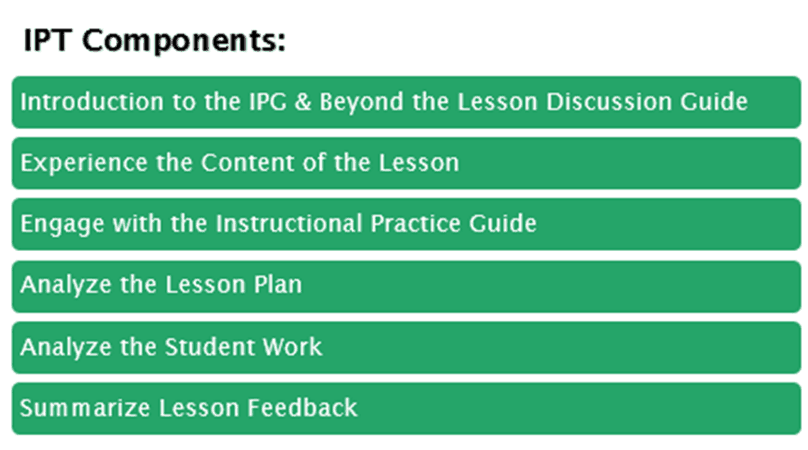What does a standards-aligned lesson look like? How do I know if my students and I are doing work worth doing; work that will support their progress toward college and career readiness? As a trainer and content specialist with Student Achievement Partners, I hear these questions from many educators. The Instructional Practice Toolkit (versions are available for ELA/literacy and math) is a professional development resource that helps shed light on those very questions.
First, it is important to recognize that there is not one “right” way for aligned instruction to look. While the research base for the high expectations of college- and career-ready standards is clear and unwavering, that research supports the learning goals; it doesn’t dictate how those goals should be accomplished. In fact, the standards require a variety of innovative teaching and learning practices to ensure the standards are achieved by all students in any context or classroom. Across the country we see many examples of what great aligned instruction looks like, where we can say, “Yes, here are the standards in action!”
- 2nd grade classroom where students, after reading about animal adaptations for weeks, used evidence from their readings to nominate, present, and vote on the most interesting, dramatic, creative animal adaptations.
- 3rd grade lesson where students represented different fractions on a clothes line number line stretched across the classroom. The ensuing discussion allowed students to explain and ask each other questions about how they knew where each fraction should be placed in comparison to 0, 1, and 2.
- A middle school American history lesson where students read about the drafting of the Declaration of Independence then used textual information to analyze and interpret John Trumbull’s Declaration of Independence, an oil-on-canvas painting that depicts the presentation of the draft of the Declaration of Independence to Congress.
- A 7th grade classroom where students explored proportional and non-proportional relationships by adjusting a lemonade recipe to make larger and smaller batches of similar, stronger, and weaker tasting lemonade. They continued by using tables to analyze relationships of ingredients to determine if they were proportional.
What exactly do these lessons have in common? What makes them aligned? The Instructional Practice Toolkit provides the resources and opportunity for educators to identify and discuss the multiple, specific, and interconnected conditions necessary for aligned classroom instruction. The result is not only a clear picture of what the standards and Shifts look like in practice,but also transferable tools and thinking to continuously improve the alignment of your own instruction.
You may be wondering, what is the Instructional Practice Toolkit? It’s essentially a detailed lesson study focused on the standards and Shifts. The Toolkit brings together resources to analyze one lesson from various perspectives to highlight the through line from designing and planning a lesson, to implementing that lesson in the classroom, to analyzing student work to see if the intended outcomes were achieved for students.
 The toolkit contains a PowerPoint with detailed notes, participant activities, and model responses to help with facilitation.
The toolkit contains a PowerPoint with detailed notes, participant activities, and model responses to help with facilitation.
We’re excited to see schools and districts across the country using the Toolkit in several ways. For example:
- A school leader used the components over several weeks in professional learning communities with grade-level teams.
- A district used the Toolkit to train a cadre of literacy and math coaches.
- The Toolkit resources were integrated into a course for educators to earn professional learning credits.
Since there are so many answers to what aligned instruction looks like, the best approach we can take as a learning community is to collect, discuss, and learn from enough examples (and non-examples) of aligned lessons so that we can confidently develop a shared vision of aligned practice.
So, what should your next step be? Find some colleagues and explore. Explore the components of the Toolkit, watch one of the lesson videos, look through some of the student work, and consider how the Instructional Practice Toolkit can be used in your school or district.

















We need help how to log in to Launch pad